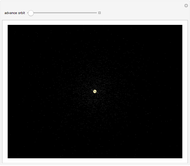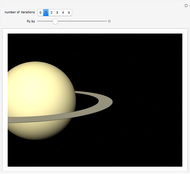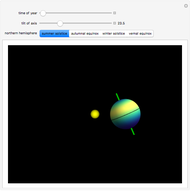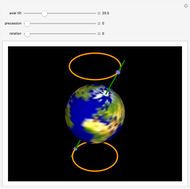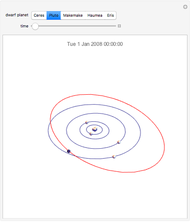Phases of Planets

Requires a Wolfram Notebook System
Interact on desktop, mobile and cloud with the free Wolfram Player or other Wolfram Language products.
Like the Moon, planets can also have phases. This demonstrates the view of Mercury, Venus, and Earth when viewed from any of these three planets. Planets in inferior orbits undergo complete phase changes like the Moon when viewed from a planet with a superior orbit. Planets in superior orbits only go though minor changes in phase when viewed from a planet with an inferior orbit.
Contributed by: Jeff Bryant (March 2011)
Open content licensed under CC BY-NC-SA
Snapshots
Details
In our solar system, Mercury and Venus are inferior planets: their orbits are entirely inside the Earth's orbit. When seen from the Earth, inferior planets go through phases, like the Moon's.
An inferior planet on the same side of the sun as the Earth appears dark and is not easy to see. Near the opposite side of the sun, we see the planet nearly in full illumination, and in between, we see crescents of various sizes.
Snapshot 1: Mercury and Venus are both in a crescent phase.
Snapshot 2: Mercury and Venus are both in a first-quarter phase.
Snapshot 3: Venus (left) is in a crescent phase and Mercury (right) is in a last-quarter phase.
Snapshot 4: Venus is in a full phase and Mercury is in a first-quarter phase.
Snapshot 5: Viewed from Mercury, neither the Earth or Venus can be viewed as a crescent since they are both in superior orbits.
Snapshot 6: Viewed from Venus, only Mercury can be seen as a crescent. Earth shows only minor phase changes.
Permanent Citation
"Phases of Planets"
http://demonstrations.wolfram.com/PhasesOfPlanets/
Wolfram Demonstrations Project
Published: March 7 2011









